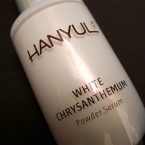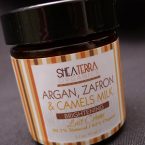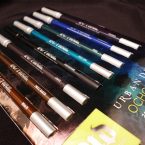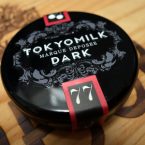Review: Biore UV Aqua Rich Watery Essence Face Sunscreen SPF 50/ PA+++
Affiliate Links I Bought This August 24, 2013 | Asian Skincare, Reviews, Skincare, Sunscreen
The first time I used Biore UV Aqua Rich Watery Essence Sunscreen, my immediate thought was, “Oh good, the perfect sunscreen! Sunscreen chemists, you can all go home now. Nice job, everyone!” Then I started researching the ingredients and thought, “Actually guys, you need to come back to work. We’re not quite there yet.” I’ve been struggling with this product because I love the application and wear of it so much, but there’s a lot more to sunscreen than the way it feels. Let’s take a closer look.
What is it?
Biore UV Aqua Rich Watery Essence Sunscreen ($15) is a facial sunscreen. Biore is a global brand, but this sunscreen is part of a line made specifically for their Japanese market. It’s chemical rather than mineral, and boasts SPF 50 / PA+++, providing both UVA and UVB protection. The water-based formula promises to be non-sticky, non-greasy, and to provide sun protection without a white cast.
Ingredients:
Water, Alcohol, Ethylhexyl Methoxycinnamate, Lauryl Methacrylate/Sodium Methacrylate Crosspolymer, Diethylamino Hydroxybenzoyl Hexyl Benzoate, Dimethicone, Acrylates/C10-30 Acrylate Crosspolymer, Glyceryl Stearate, Agar, Polyvinyl Alcohol, Sodium Hyaluronate, Citrus Grandis, Citrus Medica Limonum, Citrus Aurantium Dulcis, Xylitol, Butylene Glycol, Propylene Glycol, Sodium Hydroxide, Potassium Hydroxide, Phenoxyethanol, Disodium EDTA, BHT, Fragrance
This ingredient list is polarizing. On the one hand, there are some great actives in this formula. On the other hand, there are a handful of controversial ingredients, one of which I’m having a hard time justifying. Here’s a breakdown of the good, the controversial, and the bad:
Good:
Sodium Hyaluronate – Able to hold up 1,000 times it’s weight in water, this humectant does a great job attracting and maintaining water in the skin. It also helps promote blood circulation and nutrient absorption in the skin.
Citrus Medica Limonum – Better known as Citron, this citrus extract is rich in brightening Vitamin C and other antioxidants, and also possesses anti-inflammatory properties.
Citrus Aurantium Dulcis – An orange derived extract with Vitamin C and anti-inflammatory properties.
Xylitol – Often used as a sweetener in foods, this sugar alcohol is also a humectant that moisturizes skin when applied topically, and is thought to increase ceramide synthesis (though there are currently no studies on the ceramide claim). Don’t let your dog get ahold of it though – xylitol is extremely toxic to pets if ingested.
EDIT 08/25/2013: Added a new ingredient to the good list – Diethylamino Hydroxybenzoyl Hexyl Benzoate. Diana correctly pointed out to me in the comments that this ingredient is a UVA absorber. That sunscreen agent was a new one to me, but I’ve spent a lot of time reading about it, and I’ve got to say, it looks pretty interesting. The product rating will be changing to reflect this new information. Hooray!
Diethylamino Hydroxybenzoyl Hexyl Benzoate – This is a chemical sunscreen agent that effectively absorbs and breaks down UVA. Prior to last night, it wasn’t on my radar, though the fact that it ends in -ate should have tipped me off – chemical suncreen ingredients typically end in -ate, -ene, or -one. Now that I’ve read up on it, I’m pretty pumped about it. It’s one of the safest chemical sunscreen agents available – a study by the Scientific Committee on Consumer Products (a scientific European Committee that reviews cosmetic safety) showed that it does not pose any phototoxicity, photoallergenic, photomutagenicity, or photoclastogenicity risks. It’s a very effective UVA absorber, and works well with other sunscreen agents. It does not protect against UVB, which is fine since sunscreen agents that work for UVA seems to be far fewer than those that protect against UVB, and this ingredients pairs well with those that do.
Ethylhexyl Methoxycinnamate – Also known as Octinoxate, this ingredient is a chemical sunscreen agent. Of the chemical sunscreen agents, this is one of the gentlest, but like most chemical sunscreen ingredients, it can still cause a photoallergic effects or photosensitization in some people. Additionally, after UV exposure, all chemical sunscreens generate some free radicals in the skin, a byproduct of the absorption and break-down of UV (which is how chemical sunscreens work). The antioxidant ingredients in this formula and most sunscreen formulas containing chemical sunscreens counteract this effect to some degree. It would be less of a concern if there were also a mineral sunscreen in the formula, which deflects the UV rays so that the amount of UV being broken down by the chemical sunscreen agents is minimized.
Controversial:
Alcohol – There are two schools of though on alcohol and the skin – there are some who believe that alcohol in any amount and in any formula is harmful to the skin. Then there are those who believe that alcohol, when included in a well-formulated product, can actually be beneficial because it increases the absorption of other skincare actives. Based on the research available, which is best summed up in this FutureDerm article, I’m inclined to fall into the “alcohol can be good in a well-formulated product” camp. That said, there is a boatload of alcohol in this product – it’s the second ingredient listed – yikes! Because of the large amount contained in this sunscreen, I’m not sure whether the alcohol ingredient counts as “part of a well-formulated product” in this instance.
Sodium Hydroxide (EDIT: January 27, 2014) – This ingredient is commonly used in cosmetic products as a pH adjuster. Here’s the thing though – Sodium Hydroxide is the scientific name for lye. Lye is a strong irritant and corrosive on its own, but in this formula, it’s already been reacted – it’s acting as a pH adjuster, and is simply balancing out a highly acid formula. Because it has been reacted, it is no longer an irritant in this sunscreen.
When viewing this list in COSDNA, both Sodium Hydroxide and Potassium Hydroxide score a whopping 5 out of 5 as irritants.
Performance
Application
I apply Biore UV Aqua Rich Watery Essence Sunscreen after my toner and essence, but before applying my moisturizer. It’s important to note that this sunscreen is not a moisturizer replacement. It is designed to be used in conjunction with a moisturizer, not as a substitute. As with all sunscreens, you need about a ¼ teaspoon to get the full SPF protection listed on the front of the bottle.
One of the things I love about this formula is how quickly it absorbs upon application. I suspect that this is due to the high alcohol content, but I can’t deny what a pleasure it is to apply. It spreads easily, absorbs quickly, despite the amount of alcohol it contains, it doesn’t feel overly drying. It takes less than a minute to fully absorb, does not leave a white cast or shine.
Packaging
This product comes in a soft, plastic tube with a standard tip. Nothing too fancy, but it works!
Smell
Biore UV Aqua Rich Watery Essence Sunscreen has a light, pleasant, citrusy scent that dissipates quickly after application.
Results
If I didn’t know anything about the ingredients in this product, I would think Biore UV Aqua Rich Watery Essence Sunscreen was the perfect sunscreen. The application is so easy and pleasant, and I love how non-greasy it is. Knowing what’s in it, I’m actually surprised that it hasn’t dried my skin out, but it hasn’t. I also haven’t experienced any irritation or breakouts after using it daily for 4 weeks.
My skin is not tan, which is great – that’s a pretty good indicator that the UVB protection is solid. Even better, Biore UV Aqua Rich Watery Essence Sunscreen also provides an adequate amount of UVA protection. For the curious – UVB rays are the cause of tans and sunburns, while UVA rays are responsible for photoaging and damage in the deeper layers of the skin. Prior to my knowledge of Diethylamino Hydroxybenzoyl Hexyl Benzoate, I was concerned that I wasn’t getting enough UVA protection from this product since Ethylhexyl Methoxy Cinnamate is primarily a UVB absorber. I’m happy to report that Diethylamino Hydroxybenzoyl Hexyl Benzoate is an effective UVA absorber, so I feel pretty confident now that I am getting adequate UVA protection. (EDIT: 08/25/2013 – changes reflect Diethylamino Hydroxybenzoyl Hexyl Benzoate information)
I love the application and wear of this formula so much; my only wish is that it did not contain Sodium Hydroxide. It is very affordable, which is important since I go through sunscreen pretty rapidly. If this formula dropped the Sodium Hydroxide, my search for the perfect sunscreen would be over.
Pros:
+ Great UVB & UVA protection
+ Non-greasy
+ Not drying
+ Easy to apply
+ Absorbs quickly
+ Smells great
+ Affordable
+ Didn’t break me out
Cons:
– Contains some questionable ingredients
– Could be irritating for sensitive skin
Skin & Tonics Rating:
Performance: 5 – Great UVA & UVB protection, wears well, absorbs quickly
Quality: 3 – There are some pretty good ingredients in this formula – unfortunately, they appear alongside a couple less desirable ingredients. The alcohol content is very high.
Value: 5 – At $15, it’s an extremely affordable and overall, a decent contender compared to other chemical sunscreen available
Overall: 4.4/5
Where to Buy:
I picked mine up on Amazon.com for $15.
This post contains affiliate links. Shopping these links help support this site! Full disclosure.




















This is such a great sunscreen review! You hit every base I was concerned with and I also learned a lot~
As for me, I’m pretty white so I prefer physical sunscreens because they don’t produce free radicals, and whitecast is not too big of a deal. Hardest thing for me is getting them to not be greasy, thankfully Asian brands tend to address that (oily skin is common in Asia). Keep it up the great reviews, Kerry!!
Thanks! I’m so glad you found it helpful! What are your favorite Asian physical sunscreens?
Thanks Kerry! Ure review is grate! I’m from east Europe so I’m quite pale too, and I’m sunscreens fan and always looking forward to good reviews- since I still haven’t been able to find the ‘perfect’ one:)
I prefer when the screens are physical and chemical mix- somehow i guess it’s safer, what do U think?
Speaking about pure physical/mineral filters- isn’t that a bit scary that the titanium dioxide in the formula can, under some conditions, lead to even faster aging than not using screen at all?: link to the article about it from ELSEVIER: http://www.sciencedirect.com/science/article/pii/S101113440500014X
Hey sugarninja! I’m also a fan of a physical/chemical combo! The two together are so much more effective than a formula that contains only one or the other.
That study about titanium dioxide is very interesting. I had not read about it before, but it’s definitely piqued my interest. I plan to look for more studies and see if I can find more information about it. Thank you so much for sharing it!
Hi,
I just wanted to comment that octinoxate is not the sole sunscreen agent. Diethylamino Hydroxybenzoyl Hexyl Benzoate, which absorbs UVA (http://en.wikipedia.org/wiki/Diethylamino_hydroxybenzoyl_hexyl_benzoate), is the fifth ingredient listed. Otherwise, thanks for this great review! 😀
Thanks, Diana! That’s a new one for me. Looks like I’ve got some reading to do! 🙂
Just came upon your blog and loved your review of this sunscreen! Have you reviewed/tried Shiseido’s Hada Senka Mineral UV Gel SPF50PA+++? I would love to know how to compares to this one.
Hey Hellen! I have not reviewed the Hada Senka yet, but I definitely plan to! Hopefully soon – I have some and have used it twice, but I’d like to try it for 28 days and then review. Have you tried it yet? Do you have a favorite sunscreen?
So in depth. You really did your research! Interesting read. ^^
Sunscreen are probably my favorite products to research and write about. I think a large part of my interest comes from the fact that I haven’t found my HG sunscreen yet!
Thanks for the honest review! From my perspective, however, lye is the archaic name for NaOH. It’s a strong base, yes, but testing the pH of the product would be even more informative! For example, a small amount of lye could have been added because the product was too acidic and they needed to neutralize it, which would just turn the ingredient into sodium ions and water.
Hi CT! You make a very good point! I am sure that the Sodium Hydroxide is probably added as a pH adjuster. Still, even as a pH adjuster, I am wary of it because of its poor ratings in all the cosmetic databases. Admittedly, I’m no chemist, so my fear may be unfounded. I feel similarly about other pH adjusters too. They aren’t dealbreakers by any means, but there are so many products that manage without them – I think my dream formula would not have a need for one! 🙂
its not 1/4 teaspoon but 1/2 teaspoon !
Hi Marielle! According to my dermatologist, 1/4 teaspoon is actually the recommended amount for the face. 1/2 teaspoon would be enough for the face and neck. 🙂
Hello… I really like your review it’s very informative. This is my current sunscreen now and I’m also on a look-out for a better sunscreen. I discover a korean sunscreen it’s ElishaCoy water drop suncream SPF33 PA. I wish you can make a review of this product.
Hi Joan! Thanks for the suggestion. I will give that sunscreen a try!
What do you think about the Innisfree Eco Safety Perfect Sunblock in SPF 50?
Here is a link to it on cosDNA: http://cosdna.com/eng/cosmetic_8276119901.html
The ingredients looked ok to me, but it will probably make more sense to you! This sunscreen is just a lot more available where I live, so I was hoping that it was a good one!
Hi! Not sure if you still get notifications from blogs that you posted awhile ago… but I just purchased practically the same sunscreen but the watery jelly, instead of the water essence. To be specific, it’s the Biore UV Aqua Rich Watery Jelly Water Base. I wanted to ask your opinion on this sunscreen, and whether it has practically the same beneficial ingredients as your above sunscreen (like Diethylamino Hydroxybenzoyl Hexyl Benzoate …and if there’s a lot of sodium hydroxide in this one too). The ingredients are all in Japanese and I’m not sure how to translate it … I bought this instead of the Water Essence because I thought maybe the essence would be too heavy on my oily skin. Thanks!
Thanks for the review! I just bought this recently from a store and when I squeezed it, the top part was kind of yellow. So I’m concerned that it’s starting to expire. I took it back to the store though and they said it’s supposed to be like that and didn’t want to refund/exchange unless it gave me allergies.
Did you experience this when you first squeezed it out?
I bought a 2 packs of this sunscreen and just received it in the mail. Unfortunately, it comes with no english instructions. On the front of the new and unopened package, there’s a sticker that says “2013”. Do you have any idea what it means? I’m worried that it might be an expired pack. 🙁
Thank you!
pk
Hi PK,
I hope Kerry doesn’t mind me butting in (I’m reviewing her sunscreen entries to see if I want to try anything besides the Hada-Labo gel I am using (found on her blog and LOVE) but my understanding is that Korean products are labeled with the date of packaging, not the date of expiration. So I’m going to take a stab and assume the same is true of Japanese products. Hope that helps!
On the crimped end of the tube you should be able to see a number printed onto the bottle. The last 4 numbers are the batch code – this website http://cosmetic.momoko.hk/ will look up the batch code and tell you when that batch was produced so you can tell how old it is. Biore is owned by Kao so find them in the drop down and then enter the last 4 numbers on the tube to find out.
Thank you for your detailed review, I have seen this product in various youtube reviews, but did not have a chance to purchase online, as usually do not trust buying it like that, but my brother went to Tokyo and bought it for me. However since the descriptions were in Japanase and we couldn’t found a way to correctly translated it and know the ingredients, this post has been great for my knowledge of the product.
Such a great reviews and I went to buy it to try it out. You see I always choose a more of firm/thick cream as SPF as it is easier to measure and I felt it’s okay to go after my moisturizer.
I would like to try this and put this on before moisturizer as it is lighter, but I wonder if I am doing it correctly? Would I disrupt my sun protection layer when I put on moisturizer. Can you share tips and know hows to apply this type of sunscreen?
Question: shouldn’t sunscreen be applied last? Why did you choose to apply it before moisturizer?
thank you.
This sunscreen would now be banned in Hawaii as dangerous to coral reefs because of the ingredient octinoxate.
Hello Kerry. like to note that there is no need to wonder why the PH of the formula needed to be adjusted – any compound that ends in “-ate” is an organic acid unless neutralized by an appropriate positive ion.
DHH-Benzoate can be also called called DHH-Benzoic acid, Hyaluronic acid is also called hyaluronate. Same for EM-Cinnamate. There may be more acidic reacting compounds, but these are probbly the three major ones.
The acids are provided with a sodium ion by the sodium hydroxide to form neutral and stable organic salts (and water).
However, since it’s mandatory to list ingredients and not the final composition, the hydroxide has to be on the list.
I’d rather be wondering about why a silicone oil (dimethicone) was needed in the water-based composition.
Vojtech